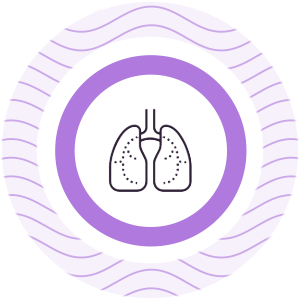- Agency for Toxic Substances & Disease Registry. Toxic Substances Portal. Retrieved from https://www.atsdr.cdc.gov/substances/toxchemicallisting.asp?sysid=38
- Arnold, C. (2016). On the vapor trail: examining the chemical content of e-cigarette flavorings. Environmental health perspectives, 124(6), A115.
- Centers for Disease Control and Prevention (2018). Electronic Cigarettes. Retrieved from https://www.cdc.gov/tobacco/basic_information/e-cigarettes/index.htm
- Jensen, R.P., Luo, W., Pankow, J.F., Strongin, R.M., & Peyton, D.H. (2015). Hidden formaldehyde in e-cigarette aerosols. New England Journal of Medicine, 372(4), 392-394.
- Krishnan-Sarin, S., Morean, M., Kong, G., Bold, K. W., Camenga, D. R, et al. (2017). E-Cigarettes and “Dripping” Among High-School Youth, Pediatrics, 139(3), e20163224. doi: 10.1542/peds.2016-3224
- National Academies of Sciences, Engineering, and Medicine. (2018). Public health consequences of e-cigarettes. Washington, DC: The National Academies Press. doi: https://doi.org/10.17226/24952
- Pellegrino, R.M., Tinghino, B., Mangiaracina, G., Cattaruzza, M.S. (2012). Electronic cigarettes: an evaluation of exposure to chemicals and fine particulate matter. Annali Di Igiene, 24(4), 279-88.
- Raloff, J. (2015) The Dangers of Vaping: Teens are falling for flavored e-cigs, but the vapors they inhale may be toxic, Science News, 188(1) doi: 0.1002/scin.2015.188001019
- Raymond, B., Collette-Merrill, K., Harrison, R. G., Jarvis, S., Rasmussen, R. (2017). The Nicotine Content of a Sample of E-cigarette Liquid Manufactured in the United States. Journal of Addiction Medicine. doi: 10.1097/ADM.0000000000000376 [EPUB Ahead of Print]
- U.S. Department of Labor. Occupational Safety and Health Administration. (2012). Diacetyl. Retrieved from (https://www.osha.gov/dts/chemicalsampling/data/CH_231710.html)
- U.S. Department of Health and Human Service. E-Cigarette Use among Youth and Young Adults: A report of the Surgeon General. Atlanta, GA: U.S. Department of Health and Human Services, Centers for Disease Control and Prevention, National Center for Chronic Disease Prevention and Health Promotion, Office on Smoking and Health.
- U.S. Department of Health and Human Services, Centers for Disease Control and Prevention, Office on Smoking and Health. (2015). Electronic Nicotine Delivery Systems: Key Facts. Retrieved from https://www.cdc.gov/tobacco/stateandcommunity/pdfs/ends-key-facts-oct-2016.pdf
IT'S TIME
To Rethink
Vaping.
Vaping has different risks than smoking, and it’s not safe for teens. Considering the chemicals in the aerosol, the risks to your health, and the tobacco company connections, it’s time to rethink vaping.




WHAT’S IN THE AEROSOL?

IT’S JUST “HARMLESS WATER VAPOR” RIGHT? WRONG.
Many teens think that vaping is a healthy alternative to smoking traditional cigarettes with no downside. Unfortunately, that’s just not the case. Aerosol from e-cigs and vape devices, like Puff Bar, is risky for your health. Some people believe the aerosol going into the lungs and exhaled out is just water vapor.
But lab tests show that aerosol is actually loaded with chemicals such as; diacetyl, nitrosamines, acrolein, diethylene glycol, propylene glycol, vegetable glycerin and, of course, nicotine. Even though some chemicals are “generally recognized as safe” to have in food and drinks, they are not necessarily safe for you to breathe into your lungs. Also, toxic chemicals like formaldehyde, acetaldehyde, and ultrafine particles have been found in vape aerosol. These chemicals have big names, but what are they exactly? Read below:
- Agency for Toxic Substances & Disease Registry. Toxic Substances Portal. Retrieved from https://www.atsdr.cdc.gov/substances/toxchemicallisting.asp?sysid=38
- Arnold, C. (2016). On the vapor trail: examining the chemical content of e-cigarette flavorings. Environmental health perspectives, 124(6), A115.
- Centers for Disease Control and Prevention (2018). Electronic Cigarettes. Retrieved from https://www.cdc.gov/tobacco/basic_information/e-cigarettes/index.htm
- Jensen, R.P., Luo, W., Pankow, J.F., Strongin, R.M., & Peyton, D.H. (2015). Hidden formaldehyde in e-cigarette aerosols. New England Journal of Medicine, 372(4), 392-394.
- Krishnan-Sarin, S., Morean, M., Kong, G., Bold, K. W., Camenga, D. R, et al. (2017). E-Cigarettes and “Dripping” Among High-School Youth, Pediatrics, 139(3), e20163224. doi: 10.1542/peds.2016-3224
- National Academies of Sciences, Engineering, and Medicine. (2018). Public health consequences of e-cigarettes. Washington, DC: The National Academies Press. doi: https://doi.org/10.17226/24952
- Pellegrino, R.M., Tinghino, B., Mangiaracina, G., Cattaruzza, M.S. (2012). Electronic cigarettes: an evaluation of exposure to chemicals and fine particulate matter. Annali Di Igiene, 24(4), 279-88.
- Raloff, J. (2015) The Dangers of Vaping: Teens are falling for flavored e-cigs, but the vapors they inhale may be toxic, Science News, 188(1) doi: 0.1002/scin.2015.188001019
- Raymond, B., Collette-Merrill, K., Harrison, R. G., Jarvis, S., Rasmussen, R. (2017). The Nicotine Content of a Sample of E-cigarette Liquid Manufactured in the United States. Journal of Addiction Medicine. doi: 10.1097/ADM.0000000000000376 [EPUB Ahead of Print]
- U.S. Department of Labor. Occupational Safety and Health Administration. (2012). Diacetyl. Retrieved from (https://www.osha.gov/dts/chemicalsampling/data/CH_231710.html)
- U.S. Department of Health and Human Service. E-Cigarette Use among Youth and Young Adults: A report of the Surgeon General. Atlanta, GA: U.S. Department of Health and Human Services, Centers for Disease Control and Prevention, National Center for Chronic Disease Prevention and Health Promotion, Office on Smoking and Health.
- U.S. Department of Health and Human Services, Centers for Disease Control and Prevention, Office on Smoking and Health. (2015). Electronic Nicotine Delivery Systems: Key Facts. Retrieved from https://www.cdc.gov/tobacco/stateandcommunity/pdfs/ends-key-facts-oct-2016.pdf
Nicotine
You may have heard about nicotine before. But why is nicotine so bad? Nicotine is the addictive chemical in cigarettes and most vapes. Addictive chemicals trick your brain into thinking it’s getting something good. And teens can get hooked on nicotine more easily than adults. Plus, nicotine is as addictive as heroin, cocaine, and alcohol! Which means quitting (smoking OR vaping) is hard to do. For teens, it gets worse; nicotine can harm your brain development, which may affect comprehension, critical thinking, attention, learning, and mood. Plus, nicotine raises your blood pressure and increases your heartbeat.
Even scarier, unlike many other products (like foods and drugs), no vapes are FDA approved for safe use. FDA authorization allows the product to continue to be sold in the US after FDA review, but it does not mean the FDA considers the product safe. And so far only one vape brand (Vuse) is FDA authorized – the rest are still trying to pass review. Also alarming is that a single pod often contains more nicotine than one pack of smokes, or more than 20 regular cigarettes.
Other Chemicals That May
Be Found in Vape Juice:

ACROLEIN
Used as a pesticide to control algae, weeds, bacteria, and mollusks. It’s also used to make other chemicals.

METAL AND FIBER PARTICLES
Metals like tin are present in vapor. Because these metals come from the device, they are not even present in regular cigarettes.

NITROSAMINES
Can cause cancer. They are volatile and highly flammable organic compounds, and some have been used in medication.

DIACETYL
Inhaling this chemical may cause permanent, severe, and potentially deadly lung disease. Breathing in diacetyl at high levels has been shown to cause a serious lung disease sometimes referred to as “popcorn lung”.

FORMALDEHYDE
Is a chemical widely used to make home building products. Formaldehyde is so harmful that there are rules to lower contact with formaldehyde in the home. Formaldehyde may cause chest pain, shortness of breath, coughing, and nose and throat irritation. Breathing in high levels of formaldehyde may cause cancer and increase the risk of asthma and allergies in kids.

DIETHYLENE GLYCOL
A key ingredient used in antifreeze.

Health Risks
HARVARD STUDY:
3 OUT OF 4 VAPE JUICES CONTAIN CHEMICALS LINKED TO LUNG DISEASE
While vaping may avoid some of the cancer causing ingredients that occur when you light traditional tobacco cigarettes, there are still other risks because of the flavors and other chemicals in vape juice and vape pods. Since vaping has only been around for a short period of time, it’s too early to really know the long-term effects of vaping on your health. But we do know some of the short-term health effects, such as:
 ×
×
- Allen, J. G., Flanigan, S. S., LeBlanc, M., Vallarino, J., MacNaughton, P., Stewart, J. H., & Christiani, D. C. (2016). Flavoring chemicals in e-cigarettes: diacetyl, 2, 3-pentanedione, and acetoin in a sample of 51 products, including fruit-, candy-, and cocktail-flavored e-cigarettes.Environmental Health Perspectives, 124(6),733.
- Dutra, L.M. & Glantz, S.S. (2014). Electronic cigarettes and conventional cigarette use among U.S. adolescents: a cross-sectional study. JAMA Pediatrics, 168(7): 684.
- Kosmider, L., Sobczak, A., Fik, M., Knysak, J., Zaciera, M., & Goniewicz, M. L. (2014). Carbonyl Compounds in Electronic Cigarette Vapors: Effects of Nicotine Solvent and Battery Output Voltage. Nicotine & Tobacco Research, 16 (10), 1319–1326, doi: 10.1093/ntr/ntu078
- Lødrup Carlsen, K. C., Skjerven, H. O., Carlsen, K-H. (In Press) “The toxicity of E-cigarettes and children’s respiratory health”, Paediatric Respiratory Reviews. Retrieved from http://www.prrjournal.com/article/S1526-0542(18)30004-6/pdf
- National Academies of Sciences, Engineering, and Medicine. (2018). Public health consequences of e-cigarettes. Washington, DC: The National Academies Press. doi: https://doi.org/10.17226/24952
- Pepper, J. K., Farrelly, M. C., Watson, K.A. (2018). Adolescents’ understanding and use of nicotine in E-cigarettes. doi: 10.1016/j.addbeh.2018.02.015
- Soneji, S., Barrington-Trimis, J.L., Wills, T.A., Leventhal, A.M., Unger, J.B., Gibson, L.A., Sargent, J.D. (2017) Association Between Initial use of e-cigarettes and subsequent cigarette smoking among adolescents and young adults: a systematic review and meta- analysis. JAMA Pediatrics, 171(8) doi: 10.1001/jamapediatrics.2017.1488
- Talih, S., Balhas, Z., Salman, R., Karaoghlanian, N., Shihadeh, A. (2016). “Direct Dripping”: A High-Temperature, High-Formaldehyde Emission Electronic Cigarette Use Method. Nicotine & Tobacco Research, 18(4), 453-9. doi: 10.1093/ntr/ntv080. Epub 2015 Apr 11.
- U.S. Department of Health and Human Services. (2016). E-Cigarette use among youth and young adults. A report of the Surgeon General. Atlanta, GA: US Department of Health and Human Services, Centers for Disease Control and Prevention, National Center for Chronic Disease Prevention and Health Promotion, Office on Smoking and Health.
- U.S. Department of Health and Human Services, Centers for Disease Control and Prevention, Office on Smoking and Health. (2018). Know the Risks: E-cigarettes & Young People. Retrieved from https://e-cigarettes.surgeongeneral.gov/



LUNG FUNCTION
Even if vapes have different bad effects than traditional cigarettes, vaping still reduces lung function. Breathing in the ultra-fine particles from vaping can irritate your lungs and may start an asthma attack. Studies have shown lung cell damage from vape juice—including those that have nicotine, and the chemicals used to make the flavors.

VAPES ARE BLOWING UP. LITERALLY
If you're thinking about health concerns from vaping, you’re usually thinking about the chemicals in the aerosol; not the devices themselves. But, guess what? Some vape devices have exploded and caused third degree burns to the face, chest, and hands.

HEART PROBLEMS
Breathing in aerosol can cause tightening or narrowing in your arteries, which could lead to a heart attack.

POISONING AND CHOKING
You can get "nic sick," or overdose on nicotine, from vaping. Kids, pets and non-users can also get really sick or die if they swallow or even touch a very small amount of vape liquid.
Second Hand "Vapor"
It’s actually aerosol, not vapor, and when it goes into the air it can be breathed in by others; similar to second hand smoke from traditional cigarette smoke. And if a pregnant person is exposed to second hand aerosol, the nicotine can affect the lung and brain development of the unborn child. It may also hurt pets, friends or family members, especially someone with asthma.


Big Tobacco

"New" Vape Companies, Up to the Same Old Tricks.
For years, Big Tobacco companies told consumers that smoking was fine, non-addictive, and even healthy. Over time, we realized that these statements about cigarettes were false and misleading and that smoking cigarettes does cause serious health problems like emphysema and lung cancer. Cigarette smoking also causes more than 480,000 deaths per year in the United States alone – with more than 41,000 deaths resulting simply from secondhand smoke exposure!
Big Tobacco companies are at it again. People are buying fewer traditional cigarettes, so the major tobacco companies are investing a lot of money into e-cig or vaping products. In fact, all the major players in tobacco own at least one vape company. They want people to get addicted to their new product. JUUL, Blu, and Vuse are all connected with Big Tobacco companies.
Links Between Cigarette and Vape Brands

Tobacco Company
Reynolds
(Lorillard / RJ Reynolds)

Altria
(Philip Morris)

Imperial
Tobacco


cigarette brands
Camel
Pall Mall
Newport
American Spirit

Marlboro
Parliament
Virginia Slims

Winston
Salem
Kool
Maverick


E-Cig Brands
Vuse
Green Smoke
Mark Ten
IQOS
JUUL
Cigs Then and E-Cigs Now: Is there a difference?
Big Tobacco companies are advertising to consumers the same way they have in the past with cigarettes. And guess who they’re targeting? Teens.
- Teens and young adults are exposed to e-cigarette ads online, on social media, on TV, while streaming music, and in convenience stores and gas stations
- Ad spending by vape companies is hard to quantify and varies by year, but estimates range from $37 to $110 million per year
- One CEO of a top vape brand even said manufacturers used flavorings “to attract children.”
Just look at these examples to see how these “new” e-cig/vape companies are up to the same old tricks.
 ×
×
- Campaign for Tobacco-free Kids. (2001). Tobacco Company Quotes on Marketing to Kids. [Document] Retrieved from thetruth.com https://www.tobaccofreekids.org/research/factsheets/pdf/0114.pdf
- Centers for Disease Control and Prevention. (2017). Tobacco Use Among Middle and High School Students—United States, 2011–2016. Morbidity and Mortality Weekly Report, 66(23):597-603.
- Centers for Disease Control and Prevention. (2017). Tobacco Use Among Middle and High School Students—United States, 2011–2016. Morbidity and Mortality Weekly Report 66(23):597-603.
- Centers for Disease Control and Prevention. (2017). Tobacco Use Among Middle and High School Students—United States, 2011–2016. Morbidity and Mortality Weekly Report, 66(23):597-603.
- Centers for Disease control and Prevention. (2017). E-cigarette Ads and Youth. Retrieved from https://www.cdc.gov/vitalsigns/ecigarette-ads/index.html
- Dutra, L.M., Grana, R., Glantz, S.A. (2017). Philip Morris research on precursors to the modern e-cigarette since 1990. Tobacco Control, 26(e2), e97-e105. doi: 10.1136/tobaccocontrol-2016-053406. Epub 2016 Nov 15.
- Haardörfer, R., Cahn, Z., Lewis, M., Kothari, S., Sarmah, R., Getachew, B., & Berg, C. J. (2017). The Advertising Strategies of Early E-cigarette Brand Leaders in the United States. Tobacco Regulatory Science, 3(2), 222-231.
- National Academies of Sciences, Engineering, and Medicine. (2018). Public health consequences of e-cigarettes. Washington, DC: The National Academies Press. doi: https://doi.org/10.17226/24952
- Richtel, Matt. (2014). E-Cigarette Makers Are in an Arms Race for Exotic Vapor Flavors. The New York Times. 15 June 2014. Retrieved from https://www.nytimes.com/2014/07/16/business/e-cigarette-makers-are-in-an-arms-race-for-exotic-vapor-flavors.html
- Stanford University. Research into the Impact of Tobacco Advertising. Retrieved from http://tobacco.stanford.edu/tobacco_main/index.php
- Truth Tobacco Industry Documents. (1974). RJR Domestic Operating Goals and Assumptions. [Document]. Retrieved from thetruth.com https://industrydocuments.library.ucsf.edu/tobacco/docs/#id=pxhh0045
- Truth Tobacco Industry Documents. (1989). Other Ways to Reach the Target. [Report]. Retrieved from thetruth.com https://industrydocuments.library.ucsf.edu/tobacco/docs/#id=tkgf0059
- US Department of Health and Human Services. (2016). E-Cigarette use among youth and young adults. A report of the Surgeon General. Atlanta, GA: US Department of Health and Human Services, Centers for Disease Control and Prevention, National Center for Chronic Disease Prevention and Health Promotion, Office on Smoking and Health.
